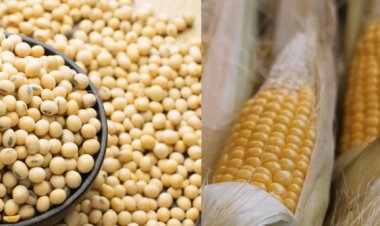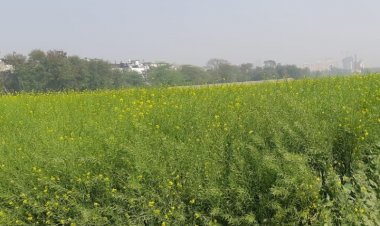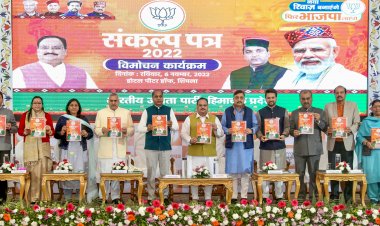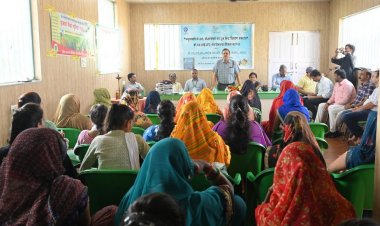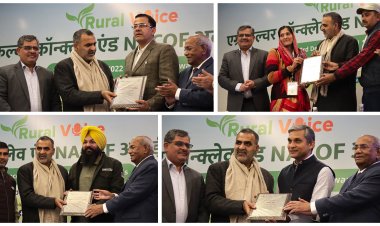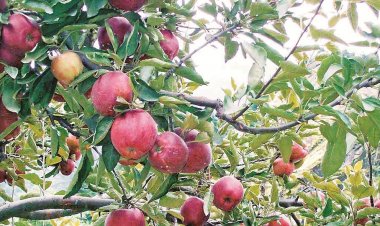Hand over agriculture marketing to farm cooperatives and collectives
The government- or corporate-sector-driven institutional arrangements may not be the best when it comes to the management of farm and other rural produce. The Government should act only as a facilitator, and support the promotion of “Collective and Corporate Partnership”, which can be the best workable model in this regard.

Despite a substantial decline in the share of agriculture in GDP over the years, the percentage of the population dependent on the agriculture sector remains the same more or less. Given this scenario, viable and profitable farm economics assumes critical importance to gainfully engage this large population within the rural space.
Through the recently enacted three farm laws, the Government is trying to introduce path-breaking agriculture market reforms for improving farm profitability. No one can have, nor has, a dispute over the stated objectives of these laws, i.e., aggregation of land holding for achieving economies of scale, more option and freedom to the producers for selling their farm produce, and facilitation for barrier-free trading of agricultural produce. Yet the farmers are agitating for the repeal of these laws! The reason for the agitation lies in apprehensions regarding their consequences and the path, instrument and modus operandi adopted for achieving these objectives. Given the history of past experiences, they may not be totally wrong.
Transferring the maximum share of value received from the consumer to the farmer has to be ensured for incentivizing farm efficiency. Absent this, the interest of farmers in agricultural activity is bound to taper off. The consequences of such disaffection will be vastly damaging for the Indian economy. Strong infrastructure support is the sine qua non of a self-reliant and robust agrarian economy. The farmers need to be empowered to take control of their enterprise. They should rightly be the entities where the capacity to hold and negotiate the due share of income rests.
With the changing times, the developmental history of humanity has seen a gradual transition from endeavours aimed purely at subsistence towards those aimed at commercialization. Within this paradigm shift of developmental activities, trading of agricultural produce began in exchange for money. While agricultural marketing as a practice may truly be old, it is still evolving as a concept, especially in rural and agrarian-dominated societies such as India. Various new architectures and formats for the marketing of agricultural and rural produce, including digital ones, are being tested for their effectiveness in tackling the pernicious issue of a middleman-dominated landscape that plagues the agricultural marketing scenario in India. Marketing is as critical a factor as farming itself for overall better performance in the agriculture sector. Therefore, an effective and efficiently functioning market, which transfers the best to both sides, i.e. farmers and consumers, ought to be an integral part of any policy for agricultural reform.
Agricultural markets are a unique type of market with special characteristics that differentiate them from other markets. These characteristics emerge mainly from factors affecting the production and supply of agricultural products as well as from the positioning of farmers in this market. In the current scenario, the farmers have no control over the price of their products and can best be classified only as price takers, with little to no influence on the price of their output. This happens only with agriculture!
In rural areas, weekly markets or haats and fairs are the first base-level important link in the marketing channel for small/marginal farmers. Around fifty thousand such markets are operating in the country. The price that the farmers receive in these markets constitutes their cash income. It is estimated that 90 per cent of surplus agriculture and allied produce in the remote areas is sold through these markets. Technically, there may not even be a marketable surplus for a large number of them, but they voluntarily forgo their immediate consumption, most often because they have something more important, and urgent, to buy by selling the produce. Such small cultivators with limited surplus find it uneconomical to go to wholesale assembling markets located at long distances from their villages. The long travel distance involved to reach a marketplace is a disincentive for most farmers, with a small surplus to sell. These primary rural markets, which function as a critical support system for farmers, also function as collection centres for the adjoining secondary markets.
No matter what legal reform measures are initiated, these primary markets will never be irrelevant, while at the same time it also remains true that large corporate entities or bulk buyers will not find it viable to directly operate in these markets. Improving the efficiency of these markets as a link in the marketing chain will be enormously beneficial, as it will facilitate proper price discovery, minimize the cost of marketing, and pave way for improving agricultural productivity. With requisite technical and financial support, these markets can also be used for effective credit delivery, input marketing, procurement, storage and promoting social collectivism. It has been observed that the societies, which operate in a collectivistic mode, have more effective informal or semi-formal community support systems which are a very important factor for nurturing and promoting psychobiological attributes such as resilience. Time has come to recognize the value and relevance of “resilience” to handle crisis and promote convergence of the individual and community resilience, which these rural markets can do.
It is in this context that a new type of electronic agricultural marketing platform, popularly known as e-NAM (National Agriculture Market), leveraging the use of information and communications technology (ICT), was launched by the Prime Minister of India in the year 2016. The e-NAM is not a parallel marketing structure. It's a device to create a national network of physical mandis that can be accessed online. It seeks to leverage the physical infrastructure of mandis through an online trading portal, enabling buyers even outside the state to participate in trading. This platform has definitely improved transparency, which will herald a new era in agricultural marketing by breaking the nexus between trader and commission agent, and pave the way for farmers to get a better price for their produce. The online system would eventually loosen the grip of middlemen and moneylenders over them — a key element to mitigate agrarian distress.
However, the e-marketing of agricultural produce requires volume and literacy of digital tools, which, unfortunately, 90 per cent of the farmers in the country are lacking. Therefore, they are not in a position to derive benefits from this advancement. This year’s Union Budget has provision for improving the progress of e-NAM, demonstrating the Government’s commitment to the welfare of farmers by focusing on improving their income through improved marketing facilities. However, the success of these initiatives and intentions will hinge on a high level of moral commitment and the honesty of ground-level implementing authorities/agencies.
State intervention in agricultural marketing is by definition aimed at correcting perceived market failures but the results have been contrary to this. Past experiences amply demonstrate that several well-intended policies and announcements have died on their way from the file to the field. If mere budgetary allocations, regulations and policies were the solutions to any crisis, then by now these issues should have been settled. Despite a plethora of schemes, massive budgetary allocations and priority attached by successive governments to the agriculture and rural sector, problems faced by the farmers still stare in the face with the same intensity as they used to a few decades back.
The up-gradation and development of primary rural markets and their integration with e-NAM together with a focus on collective farming have the potential to be the game-changer, and transform the rural and agriculture sector into a self-sustainable and viable economic system. However, for this to happen, farmers need flexible and decentralized policies, programmes, technologies and delivery structures.
The solution to realizing the full potential of agriculture and allied rural economic activities lies in the aggregation of abundantly available natural, social and emotional capital to improve the efficiency of resource use and reap the benefits of economies of scale. It is of utmost importance that the market, being the critical factor for improving the resource-use efficiency and transferring a fair share of market value to the large majority of small producers, performs with efficiency and transparency. Simplification and rationalization of regulations hold the key to improving market efficiency. Laws and regulations should be both farmer- and industry-friendly and create an integrated response system for addressing critical and strategic issues. Greater reliance needs to be placed on self-compliance rather than on the regulatory regime.
The government- or corporate-sector-driven institutional arrangements may not be the best when it comes to the management of farm and other rural produce. The Government should act only as a facilitator, and support the promotion of “Collective and Corporate Partnership”, which can be the best workable model in this regard. The Collectives, viz. Cooperatives, Farmer Producer Organizations (FPOs), Self-Help Groups (SHGs), Joint Liability Groups (JLGs) etc., can be handed over the management of primary and secondary agriculture markets. They can set up more sub-yards at village levels with cleaning, sorting, grading and packaging facilities to be managed by their affiliates. The entry and linkage with corporate/private sector players should happen at the secondary market level or beyond but not below. These collectives should be extended requisite technical and financial assistance for the creation of infrastructure and other facilities.
Farmers will benefit from the improved and deregulated markets only to the extent they are able to organize themselves into groups/collectives and learn skills suited to the new marketing environment. Understanding quality standards, learning the terms of contract, and choosing and preparing the produce for the market are going to be essential skills for farmers.
In the end, if we forget that the production agent of food, i.e., nature, has its own laws as well as boundaries that are far more powerful moving agents and that man-made laws must follow and be compatible with natural laws, we will forget them to our own peril. Wishing it the other way round would simply be disastrous. As should be apparent, natural laws cannot be made subservient to, nor can they be bounded by, Government rules and regulations. Therefore, confining production, movement and marketing of agricultural products within the boundaries of commercial laws have to be absolutely minimal. It will be greatly more prudent, and the benefits disproportionately rewarding, if such activities are guided more by humanitarian considerations.
(The writer is a former Deputy Managing Director, National Cooperative Development Corporation. The views here are personal )



 Join the RuralVoice whatsapp group
Join the RuralVoice whatsapp group



















